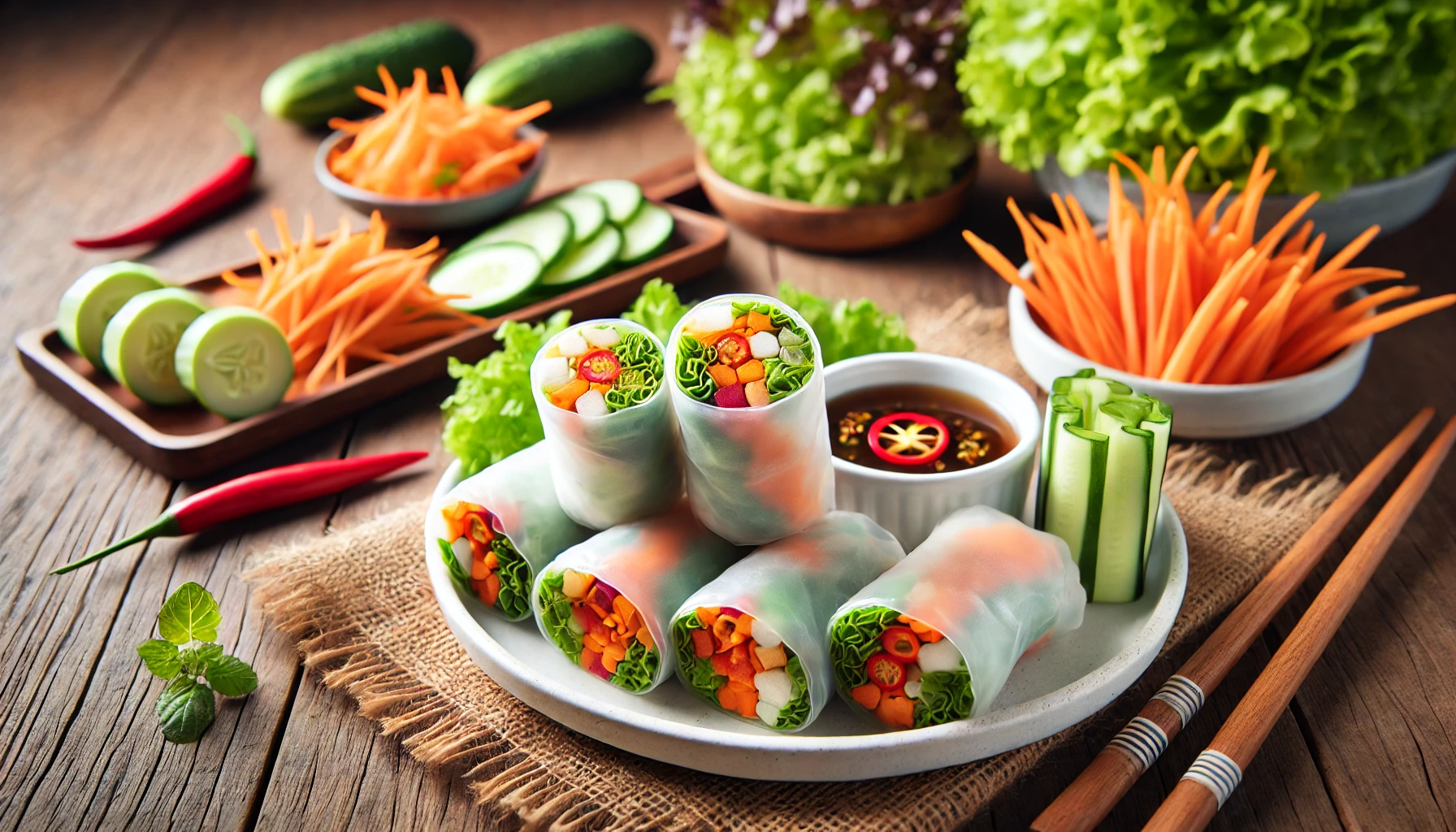If you’re a fan of fresh spring rice papers rolling, crispy egg rolls, or even trying something new for your next party, you’ve probably heard of rice papers. These thin, translucent sheets are versatile, delicious, and perfect for creating all kinds of rolled dishes. Whether you’re a kitchen newbie or a rolling pro, this guide will walk you through everything you need to know about rice papers rolling.
What Are Rice Papers?
rice papers rolling, also known as rice wrappers, are edible sheets made primarily from rice flour and tapioca starch. They originated in Vietnam and are a staple in Southeast Asian cuisine. These papers are often used to make fresh spring rolls (gỏi cuốn), but they’re so versatile that you can use them for fried dishes, desserts, and even as a gluten-free alternative in some recipes.
Why Choose Rice Papers for Rolling?
There are plenty of reasons why rice papers are a great choice for your culinary adventures:
- Healthy and Low-Calorie: Rice papers are thin and light, making them a healthier alternative to traditional dough or bread wraps.
- Gluten-Free: Perfect for those with gluten sensitivities or anyone looking for a lighter option.
- Versatile: From fresh rolls to fried dishes, rice papers can do it all.
- Easy to Use: With just a little water, they become pliable and ready for rolling.
How to Roll with Rice Papers
Rolling with rice papers might seem tricky at first, but with a little practice, you’ll get the hang of it. Here’s a step-by-step guide:
1. Prep Your Ingredients
Before you even touch the rice paper, make sure all your fillings are ready. Popular ingredients include:
- Cooked shrimp, chicken, or tofu
- Fresh vegetables like lettuce, carrots, and cucumbers
- Rice noodles or vermicelli
- Fresh herbs like mint, cilantro, or Thai basil
2. Soften the Rice Paper
- Fill a shallow plate or bowl with warm water.
- Dip the rice paper into the water for 3–5 seconds. Don’t over-soak it—it will continue to soften as you work.
3. Lay It Out
Place the softened rice paper on a clean, flat surface, like a cutting board or a damp kitchen towel.
4. Add Your Fillings
- Start with a layer of lettuce to create a barrier and prevent tearing.
- Add your other ingredients in a neat pile, leaving space around the edges for folding.
5. Roll It Up
- Fold the bottom of the rice paper over the fillings.
- Fold in the sides to seal the edges.
- Roll it tightly but gently to avoid tearing the paper.
Creative Ways to Use Rice Papers
Rice papers aren’t just for traditional spring rolls. Here are some fun and creative ways to use them:
- Fried Spring Rolls: Use rice papers instead of wonton wrappers for a crispy, gluten-free option.
- Rice Paper Dumplings: Fill and fry them for a twist on dumplings.
- Rice Paper Chips: Fry plain rice papers until puffy for a crunchy snack.
- Desserts: Wrap fruits and drizzle with chocolate for a unique dessert roll.
Common Mistakes and How to Avoid Them
- Over-Soaking the Paper
- Solution: Only dip the rice paper briefly in warm water. If it feels too stiff, let it sit for a few extra seconds on your work surface.
- Tearing the Paper
- Solution: Don’t overfill your roll, and handle the rice paper gently.
- Sticky Rolls
- Solution: Use a damp kitchen towel or lightly oil your hands and plate to prevent sticking.
Tips for Perfect Rice Paper Rolls
- Work quickly: Rice papers dry out fast, so assemble your rolls right after softening.
- Keep them covered: If you’re making a large batch, cover finished rolls with a damp cloth to keep them moist.
- Experiment: Don’t be afraid to try new fillings or rolling techniques. Rice papers are forgiving!
Conclusion
Rice papers rolling is a fun and rewarding culinary skill that opens up endless possibilities in the kitchen. Whether you’re making fresh spring rolls for a light lunch or crispy fried rolls for a party, these versatile wrappers are sure to impress. With a little practice and creativity, you’ll master the art of rolling and enjoy delicious homemade treats.
FAQs
1. What are rice papers made of?
Rice papers are made from rice flour, tapioca starch, water, and salt.
2. Do I need to cook rice papers?
No, rice papers are ready to use after softening in water. However, you can fry them if you prefer crispy rolls.
3. How do I store leftover rice papers?
Store unused rice papers in a cool, dry place in an airtight container to prevent them from becoming brittle.
4. Can I make rice paper rolls ahead of time?
Yes, but cover them with a damp cloth and store them in an airtight container in the fridge to keep them fresh.
5. What can I use instead of rice papers?
If you don’t have rice papers, you can use lettuce leaves or tortilla wraps, though the texture and flavor will differ.
Mastering rice papers rolling is easier than you think. Grab a pack, get creative, and start rolling your way to delicious meals!

